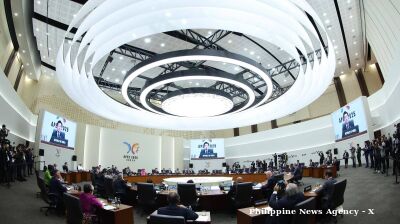The latest inflation data from the Philippines has dimmed prospects for an interest rate cut by the Bangko Sentral ng Pilipinas (BSP) at its upcoming August meeting. July's inflation figures, which recorded a y/y rise of 4.4%, significantly higher than the previous month's 3.7%, have introduced considerable uncertainty into the BSP's policy decisions, as reported by ING THINK.
BSP Governor Eli Remolona acknowledged that the latest inflation report was "slightly worse than expected," which makes an August rate cut less probable.
Given this development, it seems unlikely that the BSP will reduce policy rates at the August 15 meeting. However, the central bank might still act in the near future, potentially aligning its rate adjustments with movements by the US Federal Reserve.
The inflation spike was primarily driven by persistent high rice prices, despite a recent reduction in rice import tariffs. The anticipated decrease in rice prices following the tariff cut has yet to materialise, which could delay the expected drop in overall inflation.
Additionally, recent crop damage from Typhoon Carina might have exacerbated food price pressures, although these impacts are expected to wane over the coming months.
Looking ahead, the inflation rate in the Philippines should begin to decline as the year progresses. The contribution of rice to inflation is projected to diminish significantly by September, given that the high prices seen last year will no longer be a factor.
This anticipated decline, coupled with the absence of further significant price shocks in other consumer price index (CPI) components, should ease inflationary pressures.
While an August rate cut now appears less likely, there remains a possibility of an off-cycle adjustment if upcoming economic data, including the second-quarter GDP figures due on 8 August, indicate weaker-than-expected performance. By October, the outlook for BSP rate cuts could improve, particularly if the US Federal Reserve has already implemented its own rate reductions, potentially allowing for a more substantial adjustment by the BSP.
As the BSP assesses its options, the evolving economic landscape suggests that any decision to lower rates will be influenced by both domestic inflation trends and international monetary policy shifts.
Data
__8_1762244759.png)
Russia automotive output slumps to levels of first months of Ukraine war as demand slumps
Russia’s automotive industry — once a symbol of the country’s industrial ambitions — has entered another sharp downturn, reversing the fragile recovery seen in 2023 and early 2024.

Emerging Asia overtakes the UK per-capita benchmark
For the first time since the Industrial Revolution, the major emerging economies including China, India and Indonesia have seen GDP as a percentage of the UK’s GDP increase as the leading BRICS countries start to overtake the Developed Markets.

October PMI shows Kazakhstan’s manufacturing declined for fifth consecutive month
Renewed fall in new orders. Some firms point to difficulties receiving goods via stringent Russian customs checks.

October PMI shows little light at end of tunnel for Turkish manufacturing
Currency weakness and subdued demand plague producers in 19th consecutive month of contraction.




